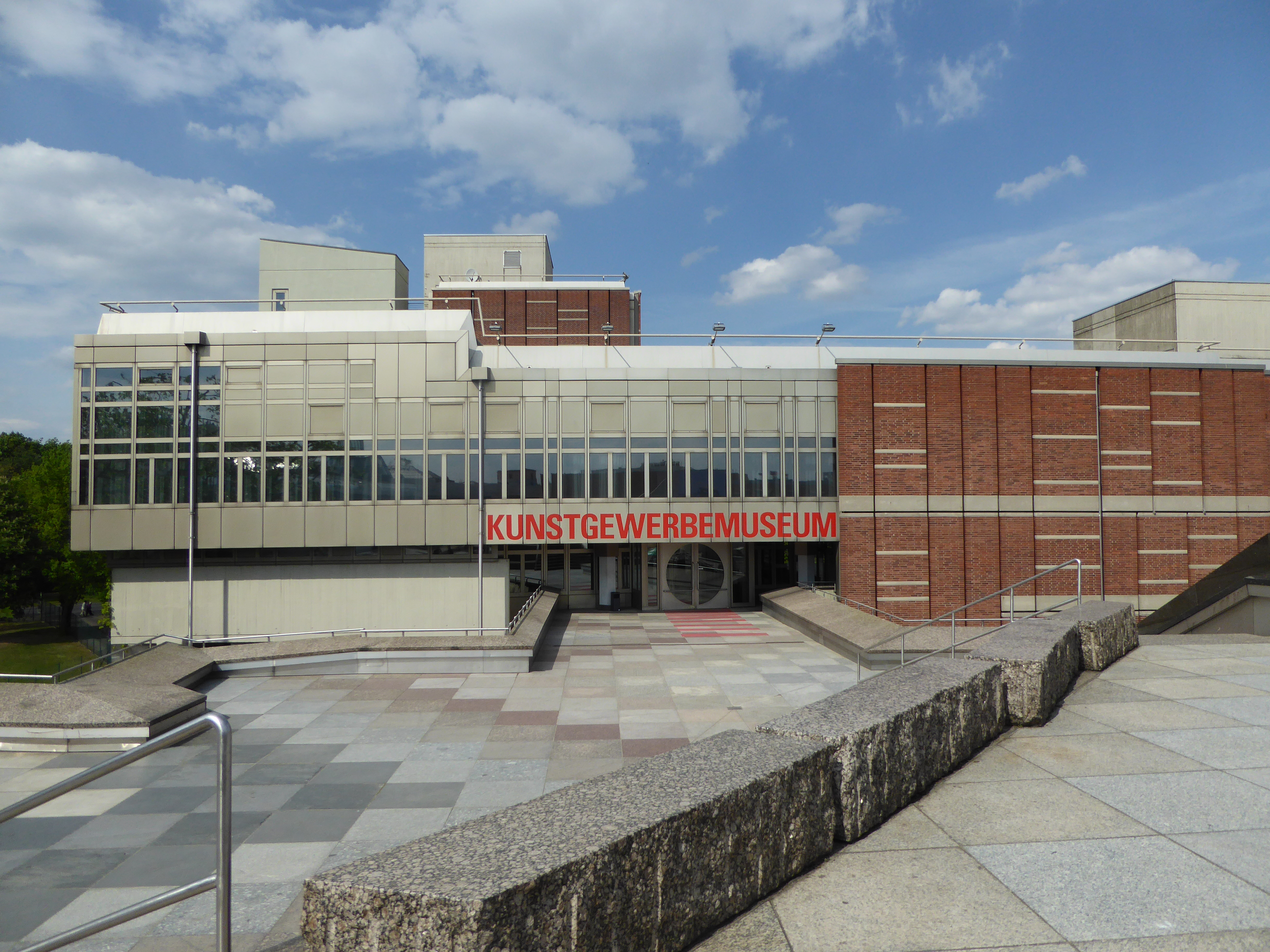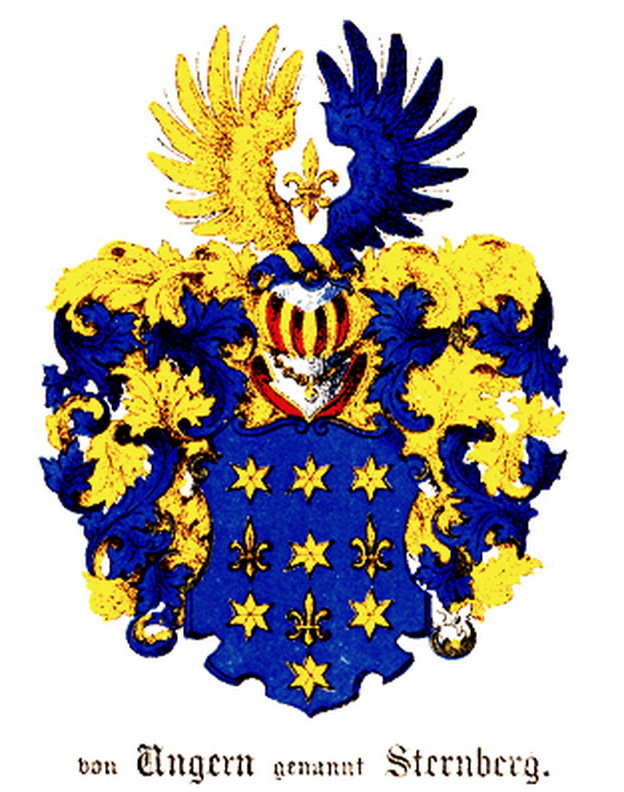|
Martin Gropius
Martin Carl Philipp Gropius (11 August 1824, Berlin – 13 December 1880) was a German architect.Wirth, Irmgard (1966).Gropius, Martin Carl Philipp. In: ''Neue Deutsche Biographie''. Band 7. Berlin: Duncker & Humblot. . p. 132-133 retrieved 2017-04-16. Life Gropius studied at the Bauakademie in Berlin and after graduation worked as a private architect. He received artistic direction from Karl Friedrich Schinkel and Karl Bötticher and continued his studies with prolonged trips through Greece and Italy. In 1856 Gropius was appointed to a professorship at the Academy of Applied Art and was later a member of the Berlin-Brandenburg Academy of Sciences and Humanities as well as the Austrian Academy of Sciences. Until his death he worked with Heino Schmieden to develop ''Fa. Gropius & Schmieden'', one of the largest architecture firms in Berlin. Martin Gropius was the great-uncle of architect and Bauhaus founder Walter Gropius. The present-day Martin Gropius Bau in ... [...More Info...] [...Related Items...] OR: [Wikipedia] [Google] [Baidu] |
Berlin
Berlin is Capital of Germany, the capital and largest city of Germany, both by area and List of cities in Germany by population, by population. Its more than 3.85 million inhabitants make it the European Union's List of cities in the European Union by population within city limits, most populous city, as measured by population within city limits having gained this status after the United Kingdom's, and thus London's, Brexit, departure from the European Union. Simultaneously, the city is one of the states of Germany, and is the List of German states by area, third smallest state in the country in terms of area. Berlin is surrounded by the state of Brandenburg, and Brandenburg's capital Potsdam is nearby. The urban area of Berlin has a population of over 4.5 million and is therefore the most populous urban area in Germany. The Berlin/Brandenburg Metropolitan Region, Berlin-Brandenburg capital region has around 6.2 million inhabitants and is Germany's second-largest metropolitan reg ... [...More Info...] [...Related Items...] OR: [Wikipedia] [Google] [Baidu] |
Kunstgewerbemuseum Berlin
__NOTOC__ The Kunstgewerbemuseum, or Museum of Decorative Arts, is an internationally important museum of the decorative arts in Berlin, Germany, part of the Staatliche Museen zu Berlin (Berlin State Museums). The collection is split between the Kunstgewerbemuseum building at the Kulturforum and Köpenick Palace History It was founded in 1868 as the ''Deutsches Gewerbe-Museum zu Berlin'', and originally had a teaching institute as well as a public museum. The collection grew significantly in the 1870s, and it was renamed ''Kunstgewerbemuseum'' in 1879. In 1881 it relocated into the Martin-Gropius-Bau – where Priam's Treasure was also on display for a time – and in 1921 it moved into the Stadtschloss.Heute mal Extremitäten Tobias Timm, '' Die Zeit< ... [...More Info...] [...Related Items...] OR: [Wikipedia] [Google] [Baidu] |
Kiel
Kiel () is the capital and most populous city in the northern German state of Schleswig-Holstein, with a population of 246,243 (2021). Kiel lies approximately north of Hamburg. Due to its geographic location in the southeast of the Jutland peninsula on the southwestern shore of the Baltic Sea, Kiel has become one of Germany's major maritime centres, known for a variety of international sailing events, including the annual Kiel Week, which is the biggest sailing event in the world. Kiel is also known for the Kiel Mutiny, when sailors refused to board their vessels in protest against Germany's further participation in World War I, resulting in the abdication of the Kaiser and the formation of the Weimar Republic. The Olympic sailing competitions of the 1936 and the 1972 Summer Olympics were held in the Bay of Kiel. Kiel has also been one of the traditional homes of the German Navy's Baltic fleet, and continues to be a major high-tech shipbuilding centre. Located in Kiel is the ... [...More Info...] [...Related Items...] OR: [Wikipedia] [Google] [Baidu] |
Wiesbaden
Wiesbaden () is a city in central western Germany and the capital of the state of Hesse. , it had 290,955 inhabitants, plus approximately 21,000 United States citizens (mostly associated with the United States Army). The Wiesbaden urban area is home to approximately 560,000 people. Wiesbaden is the second-largest city in Hesse after Frankfurt am Main. The city, together with nearby Frankfurt am Main, Darmstadt, and Mainz, is part of the Frankfurt Rhine Main Region, a metropolitan area with a combined population of about 5.8 million people. Wiesbaden is one of the oldest spa towns in Europe. Its name translates to "meadow baths", a reference to its famed hot springs. It is also internationally famous for its architecture and climate—it is also called the " Nice of the North" in reference to the city in France. At one time, Wiesbaden had 26 hot springs. , fourteen of the springs are still flowing. In 1970, the town hosted the tenth '' Hessentag Landesfest'' (Englis ... [...More Info...] [...Related Items...] OR: [Wikipedia] [Google] [Baidu] |
Friedrichshain
Friedrichshain () is a quarter (''Ortsteil'') of the borough of Friedrichshain-Kreuzberg in Berlin, Germany. From its creation in 1920 until 2001, it was a freestanding city borough. Formerly part of East Berlin, it is adjacent to Mitte, Prenzlauer Berg, Kreuzberg and Lichtenberg. Friedrichshain is named after the '' Volkspark Friedrichshain'', a vast green park at the northern border with Prenzlauer Berg. In the Nazi era, the borough was called '' Horst-Wessel-Stadt''. Friedrichshain is one of the trendy districts of Berlin and has experienced gentrification. Geography Friedrichshain is defined by the following roads and places, starting clock-wise in the west: Lichtenberger Straße, Mollstraße, Otto-Braun-Straße, Am Friedrichshain, Virchowstraße, Margarete-Sommer-Straße, Danziger Straße, Landsberger Allee, Hausburgstraße, Thaerstraße, Eldenaer Straße, S-Bahn-Trasse, Kynaststraße, Stralauer Halbinsel, Spree. History The largely working-class district was creat ... [...More Info...] [...Related Items...] OR: [Wikipedia] [Google] [Baidu] |
Estonian Academy Of Sciences
Founded in 1938, the Estonian Academy of Sciences ( et, Eesti Teaduste Akadeemia) is Estonia's national academy of science in Tallinn. As with other national academies, it is an independent group of well-known scientists whose stated aim is to promote research and development, encourage international scientific cooperation, and disseminate knowledge to the public.Academy web page at the Estonian Academy of Sciences. Accessed on line September 12, 2007. As of March 2017, it had 77 full members and 20 foreign members. Since 15 October 2014, the president of the Academy is the mathematician Tarmo Soomere.Facts of history web pa ... [...More Info...] [...Related Items...] OR: [Wikipedia] [Google] [Baidu] |
Tallinn
Tallinn () is the most populous and capital city of Estonia. Situated on a bay in north Estonia, on the shore of the Gulf of Finland of the Baltic Sea, Tallinn has a population of 437,811 (as of 2022) and administratively lies in the Harju '' maakond'' (county). Tallinn is the main financial, industrial, and cultural centre of Estonia. It is located northwest of the country's second largest city Tartu, however only south of Helsinki, Finland, also west of Saint Petersburg, Russia, north of Riga, Latvia, and east of Stockholm, Sweden. From the 13th century until the first half of the 20th century, Tallinn was known in most of the world by variants of its other historical name Reval. Tallinn received Lübeck city rights in 1248,, however the earliest evidence of human population in the area dates back nearly 5,000 years. The medieval indigenous population of what is now Tallinn and northern Estonia was one of the last " pagan" civilisations in Europe to adopt Christia ... [...More Info...] [...Related Items...] OR: [Wikipedia] [Google] [Baidu] |
Ungern-Sternberg
The House of Ungern-Sternberg is the name of an old and influential Baltic-German noble family, with branches belonging to the German, Finnish, Swedish and Russian nobility. Notable members * Mattias Alexander von Ungern-Sternberg (1689–1763), lantmarskalk at the Swedish Riksdag of the Estates (1742, 1746) * Anna Dorothea von Ungern-Sternberg (1769–1846), wife of Aleksey Grigorievich Bobrinsky * Alexander von Ungern-Sternberg (1806–1869), Baltic German novelist, poet and painter * Roman von Ungern-Sternberg (1886–1921), Russian general, White Movement warlord * Erich von Ungern-Sternberg The given name Eric, Erich, Erikk, Erik, Erick, or Eirik is derived from the Old Norse name ''Eiríkr'' (or ''Eríkr'' in Old East Norse due to monophthongization). The first element, ''ei-'' may be derived from the older Proto-Norse ''* ain ... (1910–1989), Finnish architect * * , German Diplomat, former ambassador to Iran and Indonesia Patron of the University of ... [...More Info...] [...Related Items...] OR: [Wikipedia] [Google] [Baidu] |
Eberswalde
Eberswalde () is a major town and the administrative seat of the district Barnim in the German State ( Bundesland / ''federated state'') of Brandenburg, about 50 km northeast of Berlin. Population 42,144 (census in June 2005), geographical location . The town is often called Waldstadt (forest town), because of the large forests around it, including the Schorfheide-Chorin Biosphere Reserve. Despite this fact, Eberswalde was an important industrial center until the German Reunification. History Prehistory The area around Eberswalde was already populated in Paleolithic. Before the establishment of the Margraviate of Brandenburg it was the place of a Slavic stockade. The Treasure of Eberswalde, the largest pre-Christian gold treasure from the area of today's Germany was found here. Today the treasure is located in the Pushkin Museum in Moscow. Founding and development The town of ''Everswolde'' ("forest of the boars") was established in 1254 by the Ascanian margrav ... [...More Info...] [...Related Items...] OR: [Wikipedia] [Google] [Baidu] |
Martin Gropius Krankenhaus
The Martin Gropius Krankenhaus is a neuro-psychiatric hospital in Eberswalde, Germany. It was built from 1862–1865 by architect Martin Gropius from Berlin. It was commissioned by the Estates of the then-Prussian Province of Brandenburg as an insane asylum. Overview The commissioners had installed an advisory board of psychiatrists. The various tracts were built to the needs of patients with specific disorders and for specific therapies. This design mirrored the developing medical specialization. The complex continued to house an asylum of the Province of Brandenburg until 1945. Then, the Red Army used it until 1994 as an army hospital. The psychiatric hospital was placed in auxiliary buildings. From 1997, the building was renovated. Since 2002, the neuro-psychiatric hospital is again housed in the main building. It is now jointly owned by the districts of Barnim and Uckermark and the town of Eberswalde. Since 2006, it carries the name of its architect. The hospit ... [...More Info...] [...Related Items...] OR: [Wikipedia] [Google] [Baidu] |
World War I
World War I (28 July 1914 11 November 1918), often abbreviated as WWI, was List of wars and anthropogenic disasters by death toll, one of the deadliest global conflicts in history. Belligerents included much of Europe, the Russian Empire, the United States, and the Ottoman Empire, with fighting occurring throughout Europe, the Middle East, Africa, the Pacific Ocean, Pacific, and parts of Asia. An estimated 9 million soldiers were killed in combat, plus another 23 million wounded, while 5 million civilians died as a result of military action, hunger, and disease. Millions more died in Genocides in history (World War I through World War II), genocides within the Ottoman Empire and in the Spanish flu, 1918 influenza pandemic, which was exacerbated by the movement of combatants during the war. Prior to 1914, the European great powers were divided between the Triple Entente (comprising French Third Republic, France, Russia, and British Empire, Britain) and the Triple A ... [...More Info...] [...Related Items...] OR: [Wikipedia] [Google] [Baidu] |








